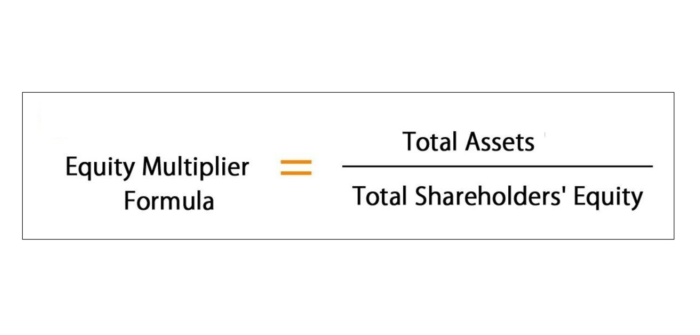The only way to achieve healthy cash flow is by implementing and regularly operating with a cash flow forecast. It’s common for small businesses to cut their marketing budgets to reduce their overall operating expenses. But reducing marketing efforts can lead to more advertising sales and discounts that can tarnish customer perception of your brand and business viability. Overall, a strong balance sheet will make you the top 5 high yield bond funds for 2020 more agile and give you options to shape a more profitable future. Be aware of the funding source, timing of payments, and any action needed for receipt of funds, such as submitting invoices or draw requests, and depositing physical checks through the Cashier’s Office. Where relevant, follow up with customers to confirm that payments have been initiated and track them to ensure that they post correctly and timely.
- After accounting for the non-cash expense – a depreciation of $20 million, the company’s cash flow from operating activities went up to $215 million.
- But first, we’ll need to explore how cash flow and net income relate to each other in the financial viability of the company.
- If you’re not charging enough or charging too much, any imbalance can lead to low profit margins.
- Negative cash flow occurs when a business spends more than it makes within a given period.
- These capital assets must be reviewed regularly, and if they are not performing then move them on and invest in those which are.
- They now and
again show up on the accounts payable register as credits, which the company’s
accounts payable staff can use to counterbalance future installments to
providers.
A business can report a negative cash balance on its balance sheet when there is a credit balance in its cash account. This happens when the business has issued checks for more funds than it has on hand. The logic is that the company likely issued the checks to reduce its accounts payable.
accounts payable be negative?
It is important that you can identify what the optimal level is for your business. The aim here is to strike a balance between liquidity and profitability, which are often conflicting strategies. Having an excessive amount of funds tied up in stock will strangle your cash flow and reduce your ability to meet financial obligations as they fall due. Therefore, the negative cash balance would be presented in the liabilities
section as part of accounts payable. Note, however, that sometimes a company
may have multiple accounts with the same bank. If a legal right of offset
exists, then the cash in other accounts can be used to “cover” the negative
cash balance, and thus, no reclassification from cash to accounts payable will
be needed.
- Stunted business growth can also lead to diminished employee morale and a tarnished company reputation.
- I recommend consulting your accountant to help you choose the accounts and the process.
- Without the proper game plan, your finances can fall off-kilter and result in negative cash flow.
When you’re dealing with negative cash flow, spending money on would-likes works against your business’s best interest. It’s more important to spend working capital on software, projects, or equipment that can keep your business open and whip your cash flow into shape. As a business owner, cash flow management should be as critical and profound as revenue and profit supervision. If you don’t take them seriously or mediate them, negative cash flow can threaten and jeopardize your business’s success and sustainability. Instead, the extra $1,500 would increase the liabilities – perhaps as an increase in the bank loan or a new payable account would be created, such as “Due to Suppliers” or “Overdraft”.
Can a Share Repurchase Cause Negative Equity?
If concessions on your products or services become constant, consumers may expect those lower prices. Or worse, they may lose interest when you get your business back to positive. This shift in expectations can have negative long-term effects on your revenue potential. If your business’s profits are too low—or you’re altogether unprofitable—you may find it difficult to source the money to cover all your essential outgoing costs. Typically, this shortcoming results in the need to borrow money to keep operations afloat.
Reasons for negative cash balances
A business requires suitable capital assets to generate revenue, with some entities more capital intensive than others. Management should invest in assets which will assist the business in achieving its financial goals. These capital assets must be reviewed regularly, and if they are not performing then move them on and invest in those which are. Businesses with strong balance sheets are more inclined to survive economic downturns and remain in a better position to succeed when the going gets good again.
agree to the Terms and Conditions.
It’s an indication that the company’s outflows (payments) are greater than its available cash, a situation that the company would likely need to address quickly to maintain its financial health. When creating the journal entry in QuickBooks Online, may I know the date or the reporting period you used? This information could potentially explain the occurrence of unapplied entries.
Remember that the cash flow statement only shows a company’s cash position. A company can still post a loss in its daily operations but have cash available or cash inflows due to various circumstances. If companies obtain financing while their cash flows are healthy, they can plan and prepare better for future expenses, instead of doing so after their cash flows are already negative. These real business cases teach us how a cash flow statement alone is an inefficient and inaccurate representation of a company’s true profitability and performance. This eCommerce giant has also been incurring negative cash flow from financing and investing activities over the past few years as can be seen in the statement below.
Netflix – Its Growth with Negative Cash Flow
However, it would be wrong to judge a business’s success by merely looking at its negative cash flow. Since this kind of negative cash flow is temporary, it would not be a negative sign for a business. To determine this, one needs to identify the type of negative cash flow that they are facing. The company however also spent $250 to acquire new fixed assets in the form of capital expenditure during the quarter.



